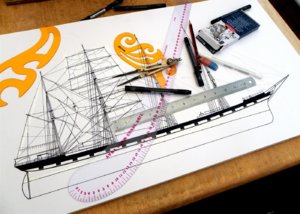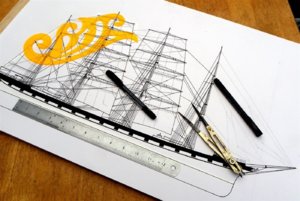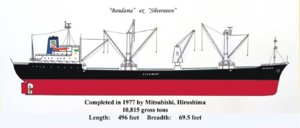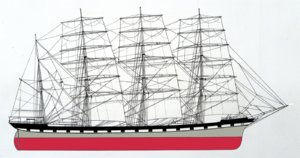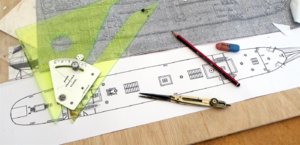- Joined
- Jun 30, 2012
- Messages
- 1,418
- Points
- 433

Another drawing
Whilst patiently waiting for better weather, I have once again got out the drawing board in the shape of a badly warped piece of three ply! The present drawing is the sail and general arrangement plan of a large 326-foot-long steel-hulled four-masted barque of 1892. Most of the hard work has now been done now with the drawing of all four masts, and the completion of the jigger mast. The 18 yards now have to be draw in and rigged on the fore, main and mizzen masts. This is more repetitive than difficult. The initial drawing was made more difficult because of the effort required to decipher the badly stained and marked original plan, that had suffered badly over the past 128 years. I was greatly assisted by the Lloyds surveyor report, that detailed the various measurements of masts, spars and rigging, and other relevant information.
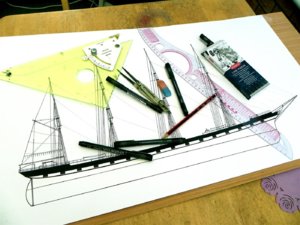 I am not expecting any great interest in this drawing, but I do find it quite relaxing, and a pleasant change from model shipbuilding.
I am not expecting any great interest in this drawing, but I do find it quite relaxing, and a pleasant change from model shipbuilding.
Bob
Whilst patiently waiting for better weather, I have once again got out the drawing board in the shape of a badly warped piece of three ply! The present drawing is the sail and general arrangement plan of a large 326-foot-long steel-hulled four-masted barque of 1892. Most of the hard work has now been done now with the drawing of all four masts, and the completion of the jigger mast. The 18 yards now have to be draw in and rigged on the fore, main and mizzen masts. This is more repetitive than difficult. The initial drawing was made more difficult because of the effort required to decipher the badly stained and marked original plan, that had suffered badly over the past 128 years. I was greatly assisted by the Lloyds surveyor report, that detailed the various measurements of masts, spars and rigging, and other relevant information.
 I am not expecting any great interest in this drawing, but I do find it quite relaxing, and a pleasant change from model shipbuilding.
I am not expecting any great interest in this drawing, but I do find it quite relaxing, and a pleasant change from model shipbuilding.Bob


